For decades, scientists have been perplexed by a massive, state-sized hole in the Antarctic ice that only reappears sporadically for short periods of time.
Now, research has allowed them to put an end to the mystery and learn what causes it to appear.
A new study published in Science Advances finally revealed that the hole formed due to a combination of wind, ocean currents, and underwater geography that created the right saline conditions for melting sea ice.
Holes in the Antarctic sea ice, known as polynyas, are frequently observed close to the shore. These are essential for the survival of many marine animals, such as penguins, seals, and polar bears. However, polynyas are rarely formed farther out to sea, where water is thousands of meters deep.
But this is the case with the Maud Rise polynya, named after the Antarctic Weddell Sea’s submerged mountain.
Scientists have finally discovered what caused the state-sized hole in the Antarctic ice known as the Maud Rise polynya
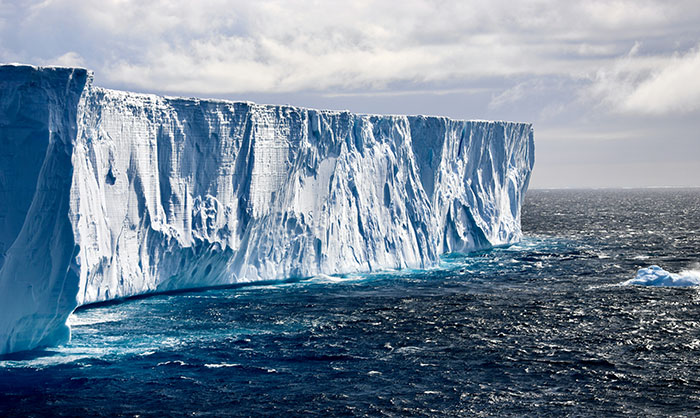
Image credits: 66 North/Unsplash
The polynya was first identified during the winter of 1974. Scientists assumed that they would observe the phenomenon each winter, but they later learned that it would only appear for brief periods.
Then, in 2016 and 2017, it returned with a bang.
In 2017, the Maud Rise polynya was especially large, growing from 9,500 square kilometers in mid-September to about 80,000 square kilometers by late October. To provide some perspective on its shocking scale, the hole was comparable in size to numerous US states, such as West Virginia, Maryland, Hawaii, Massachusetts, Vermont, New Hampshire, and New Jersey.
In fact, it was nearly the same size as South Carolina, as per NASA’s Earth Observatory.
This period marked the largest and longest-lived example of the phenomenon since the 1970s when the polynya was as massive as California.
When the polynya was first identified in the 1970s—then comparable in size to California—scientists believed they would see it again every year
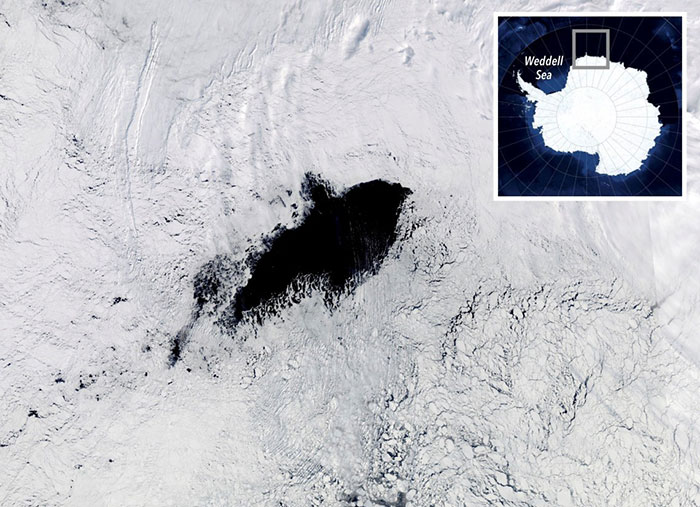
Image credits: NASA Worldview/NASA Blue Marble
To explore the confusing polynya before it disappeared again, researchers employed different techniques, ranging from satellite imagery and computational modeling to even fitting sensors on small helmets that seals wore to test the waters.
Researchers found that the first factor that explained the Maud Rise polynia was a particularly strong circular current around the Weddell Sea, which resulted in an upwelling of warm, particularly salty water.
“This upwelling helps to explain how the sea ice might melt,” explained Oceanographer Fabien Roquet of the University of Gothenburg in Sweden.
“But as sea ice melts, this leads to a freshening of the surface water, which should in turn put a stop to the mixing. So, another process must be happening for the polynya to persist. There must be an additional input of salt from somewhere,” Roquet added.
Holes in the Antarctic sea ice, or polynyas, are frequently observed close to the shore and are essential for the survival of many marine animals
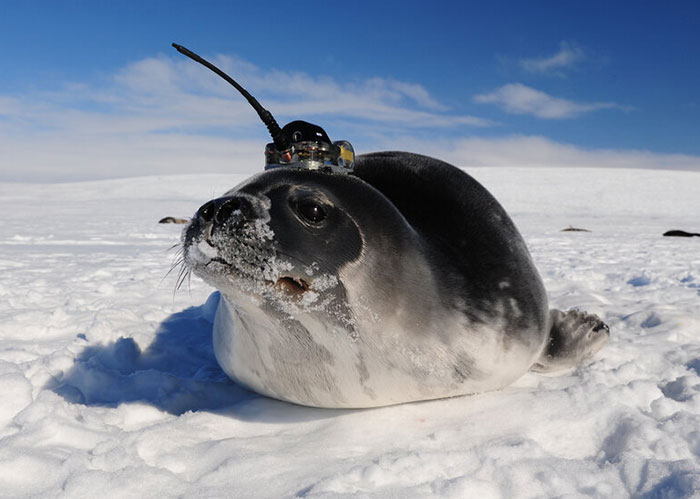
Image credits: Daniel P Costa/University of California, Santa Cruz
The team then discovered that turbulent eddies around Maud Rise brought more salt to the area, which was then transferred to the surface through a process known as Ekman transport.
Salt can significantly lower the freezing point of water, so if the water in the polynya is particularly saline, this will keep the hole from freezing over.
Through Ekman transport, water moves at a 90-degree angle to the wind, influencing ocean currents. This movement is to the right of the wind direction in the Northern Hemisphere and the left in the Southern Hemisphere.
Scientists later learned that the giant Maud Rise polynya would appear sporadically for short periods of time, and its formation was explained by an effect known as Ekman transport
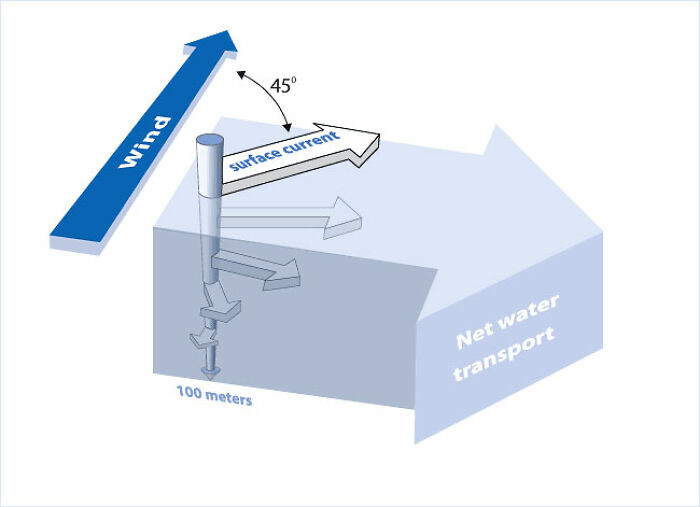
Image credits: National Ocean Service
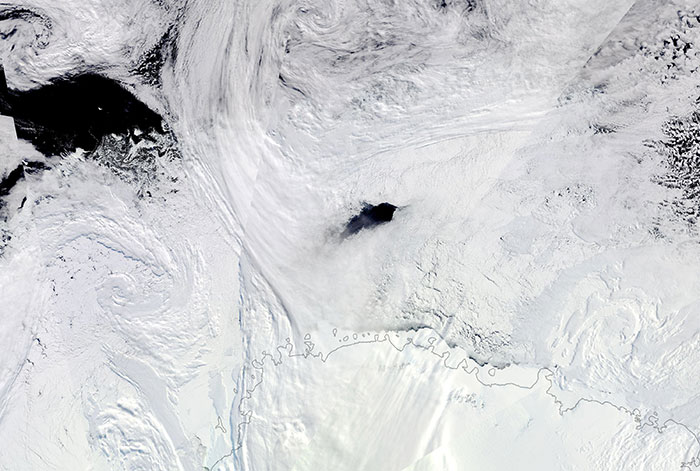
Image credits: NASA Earth Observatory images by Lauren Dauphin
This phenomenon forms convergence and divergence zones of surface water. A region of convergence forces surface water downward in a process called downwelling, while a region of divergence draws water from below into the surface in a process known as upwelling, as per Britannica.
“Ekman transport was the essential missing ingredient that was necessary to increase the balance of salt and sustain the mixing of salt and heat towards the surface water,” said Alberto Naveira Garabato, co-author of the study and oceanographer at the University of Southampton in the UK.
The massive hole formed due to a combination of wind, ocean currents, and underwater geography that created the right saline conditions for melting sea ice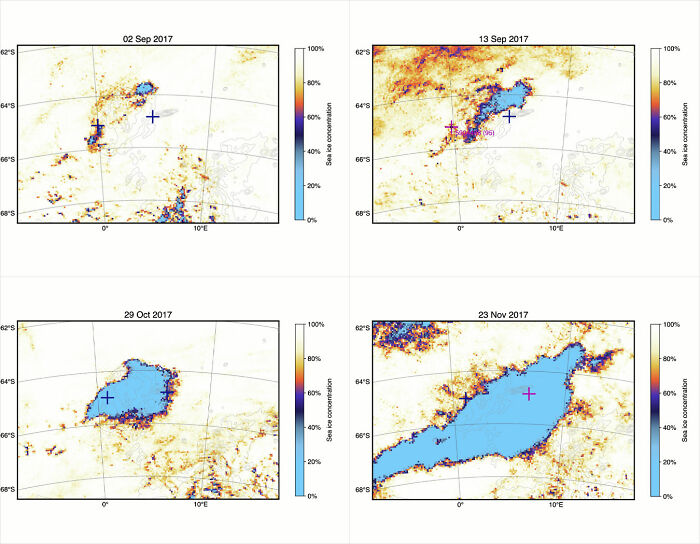
Image credits: AMSR2-ASI/University of Bremen
Some of the same processes involved in the formation of the Maud Rise polynya, such as the upwelling of deep, salty water, are driving a general reduction in sea ice in the Antarctic Ocean, also known as the Southern Ocean.
“For the first time since observations began in the 1970s, there’s a negative trend in sea ice in the Southern Ocean, which began around 2016. Before then, it had remained somewhat stable,” explained Professor Sarah Gille from the University of California San Diego, another co-author of the study.
This could also have profound consequences for the world’s oceans.
“The imprint of polynyas can remain in the water for multiple years after they’ve formed. They can change how water moves around and how currents carry heat towards the continent. The dense waters that form here can spread across the global ocean,” Gille added.
“We all know it’s the squirrel from Ice Age,” a social media user joked
































